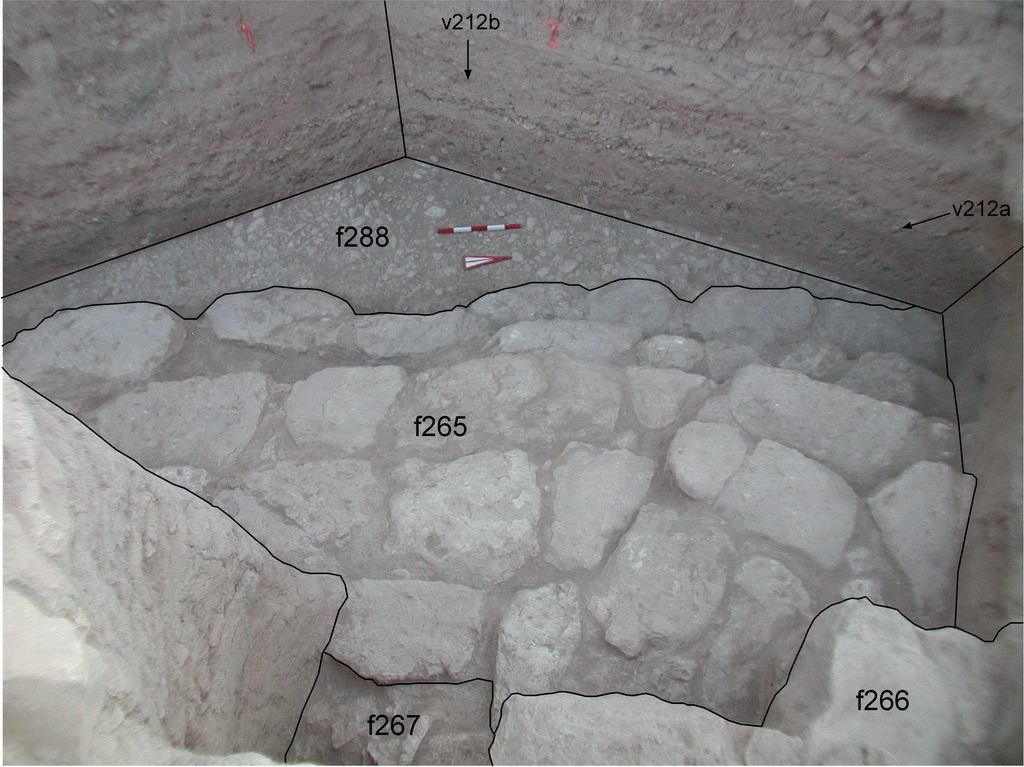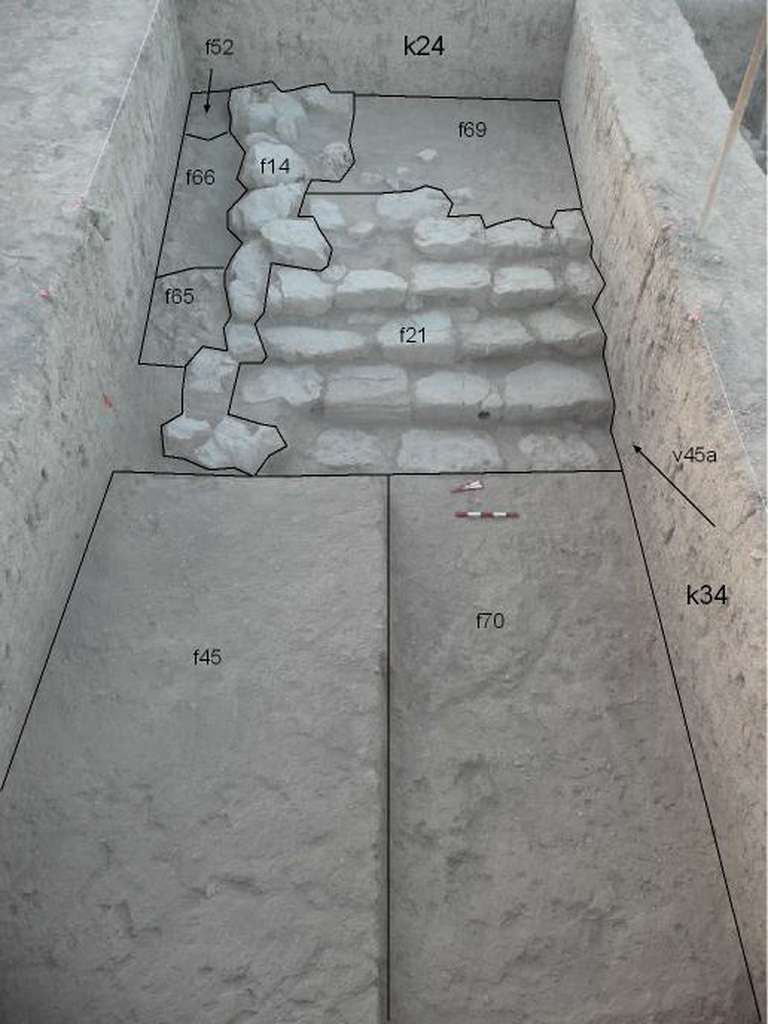Back to top: Horizontal surfaces
Introduction
There are 11 horizontal surfaces defined in the Main Lexicon as reflecting alignment in a single plane. There are 5 pavements defined by their composition and 6 floors generally defined by the degree of compaction.
Few floor surfaces and pavements have been excavated, despite a large amount of construction over several millennia. There were two pebble pavements, f288 and f249, associated with the Early Dynastic period first escarpment, ^esc1. In the Mitanni period there were a number of floors - most were associated with a monumental staircase contructed during the late Mitanni extension of the sacral complex to the west. Floor f45 is one example.
Back to top: Horizontal surfaces
Surfaces defined by discrete components (pavements)
The most significant pavement, f288, was located to the southwest of the revetment wall and its protective escarpment. Further to the east there was a similar pavement , f249 at a similar, but slightly higher elevation. There was insufficient exposure of either to determine what purpose they may have served or how they may have been related.
Another pavement, f246, was associated with the early Mittani staircase, ^strc1 that provided access to the revetment wall top. One other Mittani pavement f247, directly covered Early Dynastic pavement f249 (described above) with no evidence of intermediate occupation.
These five pavements excavated were classified as pavement type C. A brick surface, f196 is problematical. It may be a pavement type B, or the top of a substantial wall. Unfortunately excavation was paused before the true nature of this feature could be determined. |
|

|
Back to top: Horizontal surfaces
Surfaces defined by soil compaction (floors)
Most of the floors were associated with the west monumental staircase ^strc1, which was built late in the Mittani period to provide an alternate access to the BA temple when the primary entrance to the east was covered with soil. Compacted floor f45, which extended west of the lowest step of the staircase is the best example. It provided a court that may have served as a gathering place for sacred and secular activities. Another is f70.
Smaller and less distinct floors , f53 and f54, may have been part of a sacred path associated with remnants of Mittani occupation or a very localized Middle Assyrian occupation.
There were 9 highly compacted floors type B, three mediumly compacted floors type C, and one naturally compacted floor type D.
|
|

|
Back to top: Horizontal surfaces